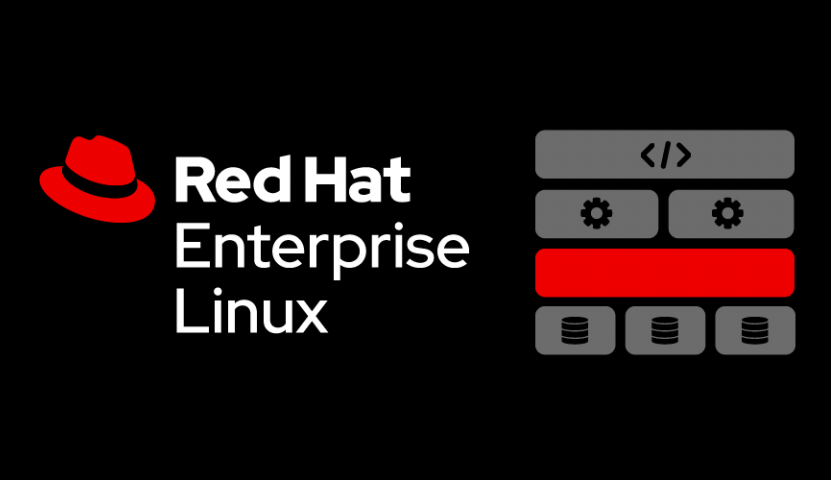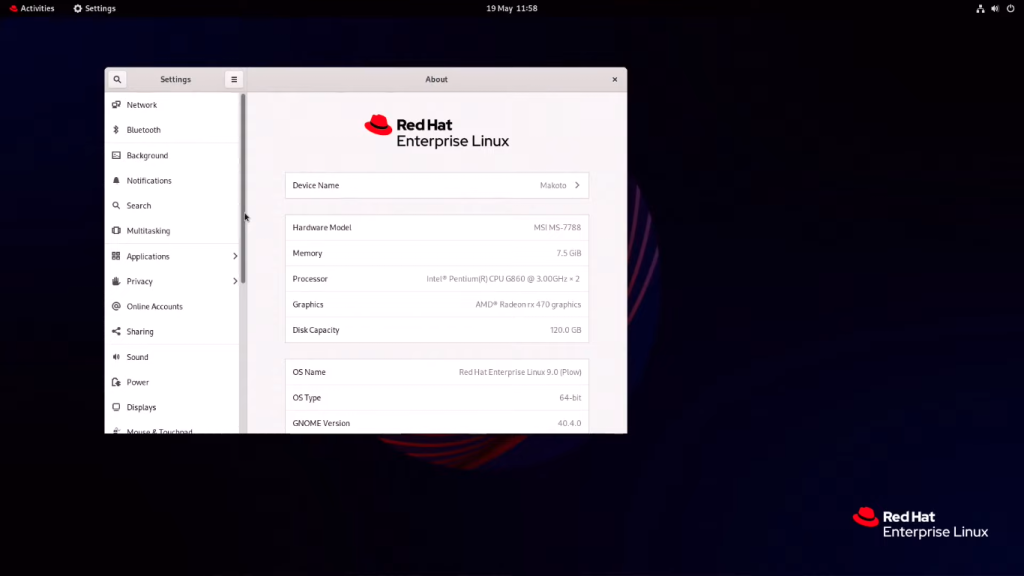Red Hat Enterprise Linux (RHEL) 9 with codename “Plow” have officially been released in May 17, 2022 and it’s now generally available (GA) for public to use on all of their devices like workstation, server, laptop, and local desktop PC or computer.
Red Hat 9 is mostly suitable to use on enterprise-based architectures or in cloud computing environment like bare-metals or VPS in order to deploy any type of automatically-distributed applications.
According to the official Red Hat press release, the launch of RHEL 9.0 is mostly designed to meet the needs for the hybrid cloud environment, where the clients can deploy and develop their code or applications from the edge ecosystem into the cloud infrastructure.
Red Hat Enterprise Linux 9 is claimed to capable to run your code more efficiently than ever, either it deployed in containers-based architecture built from RHEL Universal Base Images (Red Hat UBIs), in a virtual machine or in physical infrastructures like dedicated server or colocation server.
There are many features, improvements, enhancements, latest tools and language runtimes which you can found on the Red Hat Enterprise Linux 9, mostly as follow:
Using Kernel version 5.14.0-70.13.1
RHEL 9.0 is build based on a Linux Kernel version 5.14.0-70.13.1, it’s stable LTS kernel, tested and working very good on another Linux-based distros like Ubuntu 20.04.4 LTS and Ubuntu 22.04.0 LTS which using Linux Kernel version 5.13 (5.13 kernel).
There are most notable highlights which you can found in the Linux Kernel version 5.14 like a new I/O priority controller to manage priority of block-I/O requests, core scheduling support, and a new ioctl() command which can improve journaling on the EXT4 file systems.
As a results, information leaks will be fewer than ever. Linux Kernel version 5.14 is also equipped with a new secret memory areas with “MEMFD_SECRET”, where it have a feature which can give enhanced protection against ROP attacks, harden kernel Linux from the flaw exploits area, and prevent cross-process secret user-space memory exposures.
More Power to Developers
Red Hat 9 is built based on a number of the latest compilers and runtimes like GCC version 11.2.1, updated LLVM (version 13.0.1), Go language (version 1.17.1), and Rust (version 1.58.1), which allow all developers to modernize their applications or codes better than ever.
Update Core Developer Toolchains
There are also updated version of core developer toolchains which you can found on the Red Hat 9.0, including binutils v2.35, glibc v2.34, and GCC v11.2.1. GCC compiler bring some new features in order to helps users to better track their code flow, write optimized code for efficient hardware usage, as well as improve debugging options.
According to the RHEL 9 press release, the new GCC compiler include with some modifications on the C and C++ code language compilation, as well as new debugging messages for logs system. As a result, it can allow the developers to better handle on how their code or application performs.
Next-Generation Application Streams
All developers now will have more options or choices with RHEL 9 in terms of versions of its popular tools and languages, thanks to the next-generation application streams.
The developer behind Red Hat, Inc., have provide the initial application stream versions in order to improves their application streams experience which can be installed by users as a RPM packages using traditional commands on RedHat-based distros such as yum install command or dnf install command.
Multiple Versions of User Space Components as Application
There are multiple versions of user space components as application which all developer can select and use it in order to customize Red Hat Enterprise Linux 9.0 for their development ecosystem.
In addition, there is also application stream contents which include applications and tools which is updated more frequently and very fast. It’s actually streams-based applications or also called rolling-streams application, which will be fully supported for the full life of the Red Hat Enterprise Linux (RHEL) 9.
Extend RHEL 8+ Module Packaging Features
On the other side, REHL 9.0 is now extend RHEL 8+ module packaging features which all packaging methods like Flatpaks, traditional RPMs, and Red Hat Software Collections have been included into the application streams. It make developer more easily to use their preferred packages or softwares.
As a part of the Red Hat Developer program subscription (Red Hat for Developer), you can download RHEL 9.0 for free without spend money at all. Then you can install and use it on any type of your devices like laptop, desktop PC or computer, and even smartphones.
Moreover, you can also deploy Red Hat Enterprise Linux (RHEL) 9 on the cloud infrastructures like AWS EC2 instance (Amazon Web Services), Gloud Cloud Platform (GCP), Microsoft Azure, and or deploy it using custom virtual machine images (RHEL VM’s images) on another VPS provides like Linode, OVH, Vultr and Digital Ocean.
You can check the release version of your Red Hat Enterprise Linux using the following command:
$ cat /etc/redhat-release
Or simply use bellow command to find your kernel version:
$ uname -a
Image Credits: Red Hat Developers



